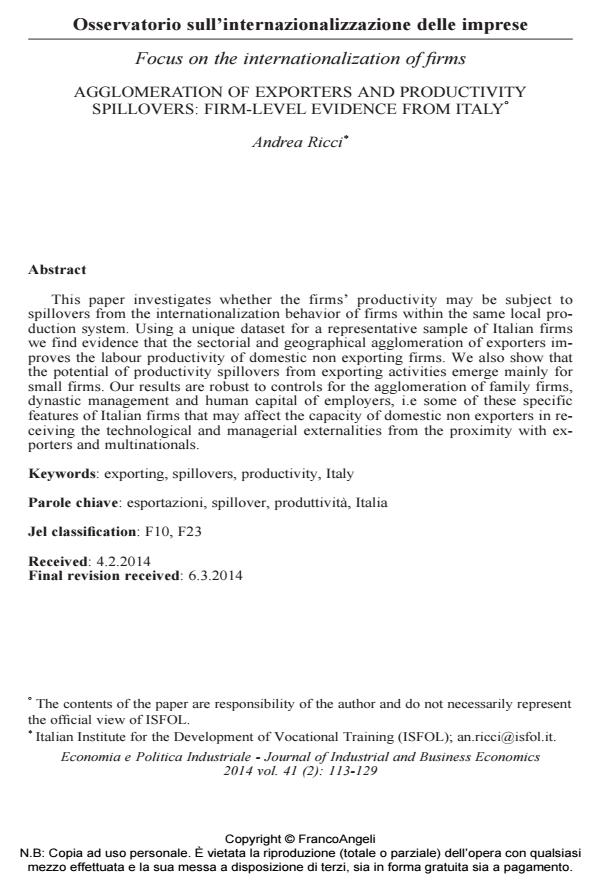Agglomeration of exporters and productivity spillovers: firm-level evidence from italy
Journal title ECONOMIA E POLITICA INDUSTRIALE
Author/s Andrea Ricci
Publishing Year 2014 Issue 2014/2
Language English Pages 17 P. 113-129 File size 71 KB
DOI 10.3280/POLI2014-002006
DOI is like a bar code for intellectual property: to have more infomation
click here
Below, you can see the article first page
If you want to buy this article in PDF format, you can do it, following the instructions to buy download credits

FrancoAngeli is member of Publishers International Linking Association, Inc (PILA), a not-for-profit association which run the CrossRef service enabling links to and from online scholarly content.
This paper investigates whether the firms’ productivity may be subject to spillovers from the internationalization behavior of firms within the same local production system. Using a unique dataset for a representative sample of Italian firms we find evidence that the sectorial and geographical agglomeration of exporters improves the labour productivity of domestic non exporting firms. We also show that the potential of productivity spillovers from exporting activities emerge mainly for small firms. Our results are robust to controls for the agglomeration of family firms, dynastic management and human capital of employers, i.e some of these specific features of Italian firms that may affect the capacity of domestic non exporters in receiving the technological and managerial externalities from the proximity with exporters and multinationals.
Keywords: Exporting, spillovers, productivity, Italy
Jel codes: F10, F23
Andrea Ricci, Agglomeration of exporters and productivity spillovers: firm-level evidence from italy in "ECONOMIA E POLITICA INDUSTRIALE " 2/2014, pp 113-129, DOI: 10.3280/POLI2014-002006